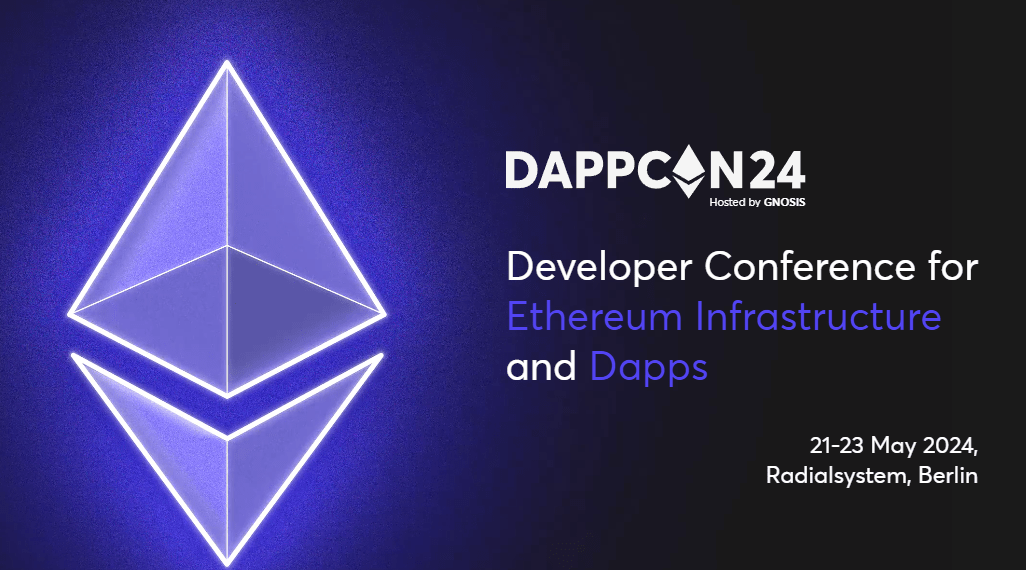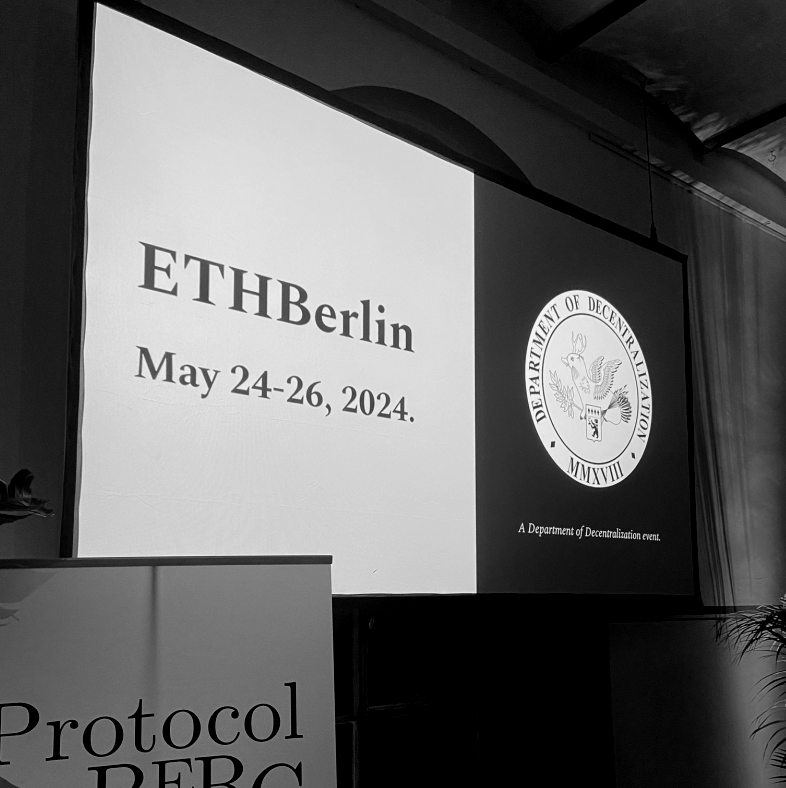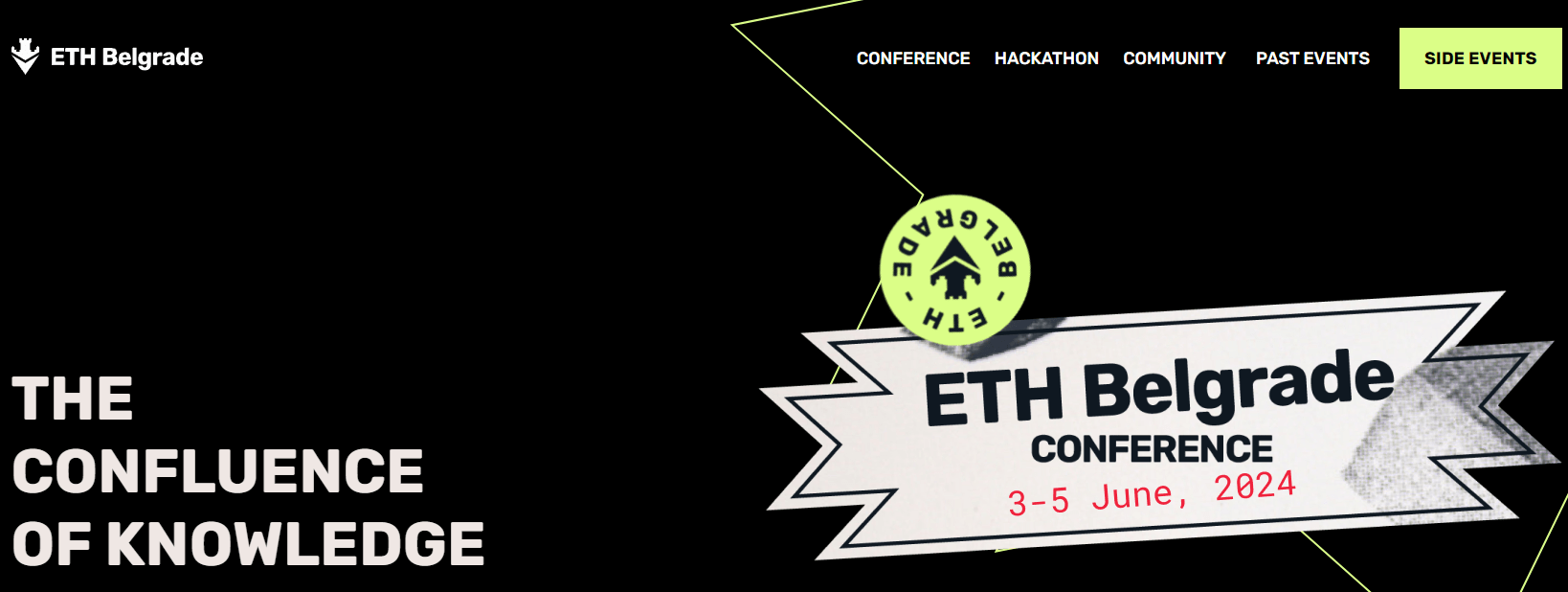L1s are undoubtedly the unsung heroes in the pursuit of scalability. Yet most of the current L1s aren’t equipped to handle multiple concurrent transactions on a colossal scale.
But, here’s the kicker: Shardeum, a smart contract platform, is changing that with the most advanced form of scaling – dynamic state sharding – all without relinquishing the ideals of decentralization and security.
It forgoes block-level consensus for lightning-fast transactions, great scalability, and lower fees. In this article, we’re going to demystify everything you need to know about this project.
It forgoes block-level consensus for lightning-fast transactions, great scalability, and lower fees. In this article, we’re going to demystify everything you need to know about this project.
Shardeum: Adieu to the Scalability Trade-off
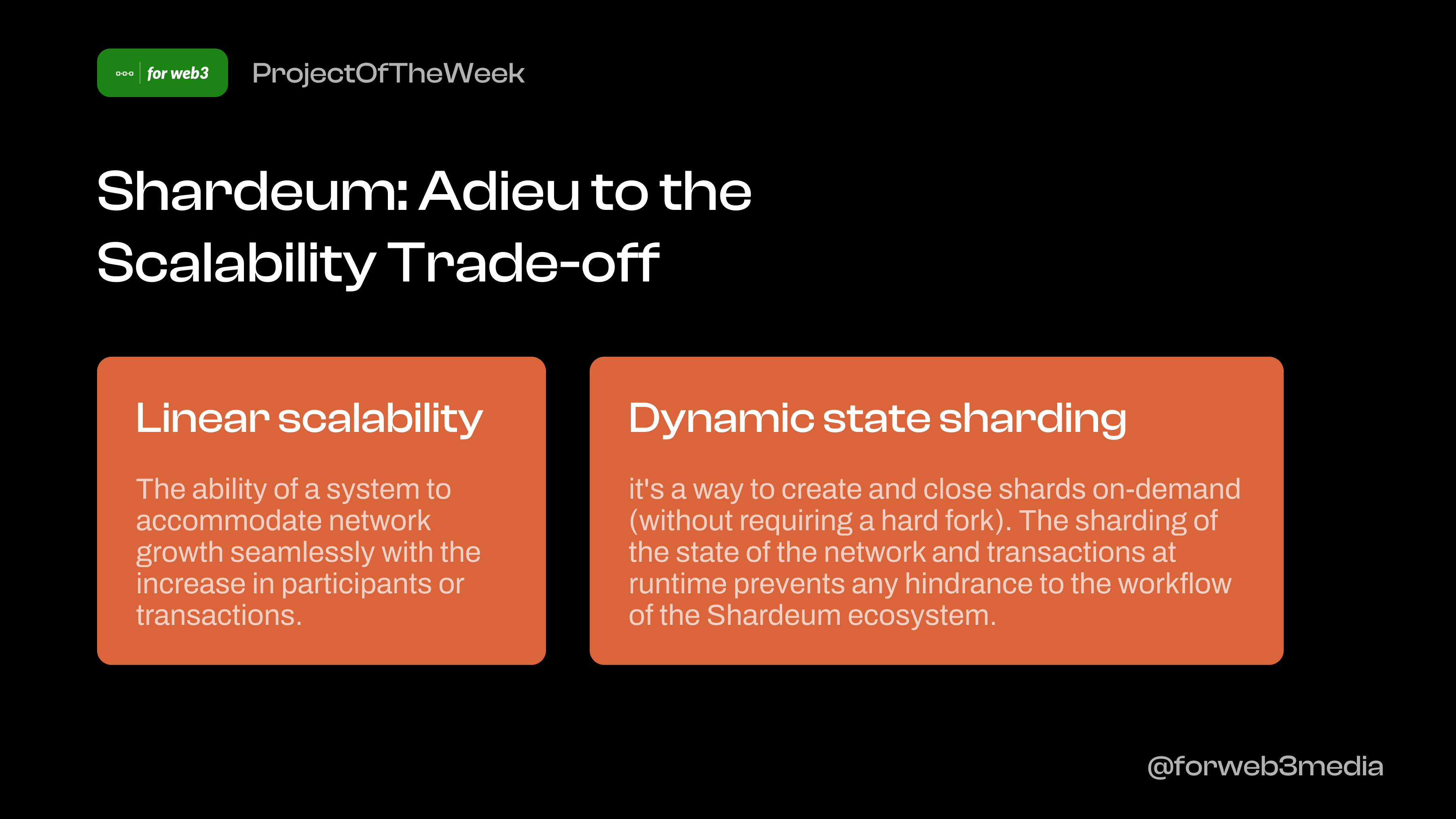
Launched in February 2022, Shardeum is an EVM-based, layer-one platform that promises linear scalability (Read: better throughput, performance, & efficiency) by using dynamic state sharding (used by the likes of Zilliqa and Near). Let’s understand some of its core features.
- Linear scalability is the ability of a system to accommodate network growth seamlessly with the increase in participants or transactions. The project achieves this by adding additional resources, such as computers, nodes, or servers, resulting in a proportional improvement in the overall network performance.
- Dynamic state sharding, it’s a way to create and close shards on demand (without requiring a hard fork). The sharding of the state of the network and transactions at runtime prevents any hindrance to the workflow of the Shardeum ecosystem. It’s also easy to add or remove blockchain shards as new updates demand that helps prevent resource wastage.
To simplify, think of an OTT platform that gains popularity with time and more users start streaming videos concurrently, creating a heavy demand on its servers and network infrastructure. The platform invests in adding more servers, increasing its network bandwidth, and optimizing its content delivery infrastructure to prevent a drop in its streaming quality.
- With Shardeum, the consensus & processing is done at the block level, where the network shards its state by dynamically distributing bandwidth, compute workload, & storage among all the nodes. Coupled with its auto-scaling feature, the network adjusts the number and size of shards based on the workload in real-time.
- Shardeum also has atomic processing, which is the automatic execution of (either all or none) transactions. The term “atomic” refers to the state of the cryptocurrency transaction where it either happens or it doesn’t, and there is no other alternative. Without this feature, there’s a risk that transactions could fail or have inconsistent state data, leading to potential security risks and reduced reliability.
- This is coupled with Shardeum’s cross-shard communication, which is the ability of a sharded blockchain to allow transactions to be shared between two or more shards. This helps transactions in accessing and utilizing data and state from various shards while maintaining a consistent state across all shards. The use of cross-shard composability helps Shardeum achieve scalability while maintaining atomicity, consistency, isolation, and durability (ACID) across all involved shards.
Vision of Shardeum
A key highlight of Shardeum is that it combines both proof of stake (PoS) & proof of quorum (PoQ) consensus mechanisms to increase network security. The nodes verify individual transactions with quick confirmation and finality before broadcasting them to the consensus group of shards. The individual nodes then get grouped into blocks and are appended to the network history.
The project envisions achieving the “impossible trinity” that includes decentralization, security, & scalability. Anyone can join the ecosystem to support its guiding principle- Open, Collaborative, and Community Driven (OCC).
Financing & Numbers
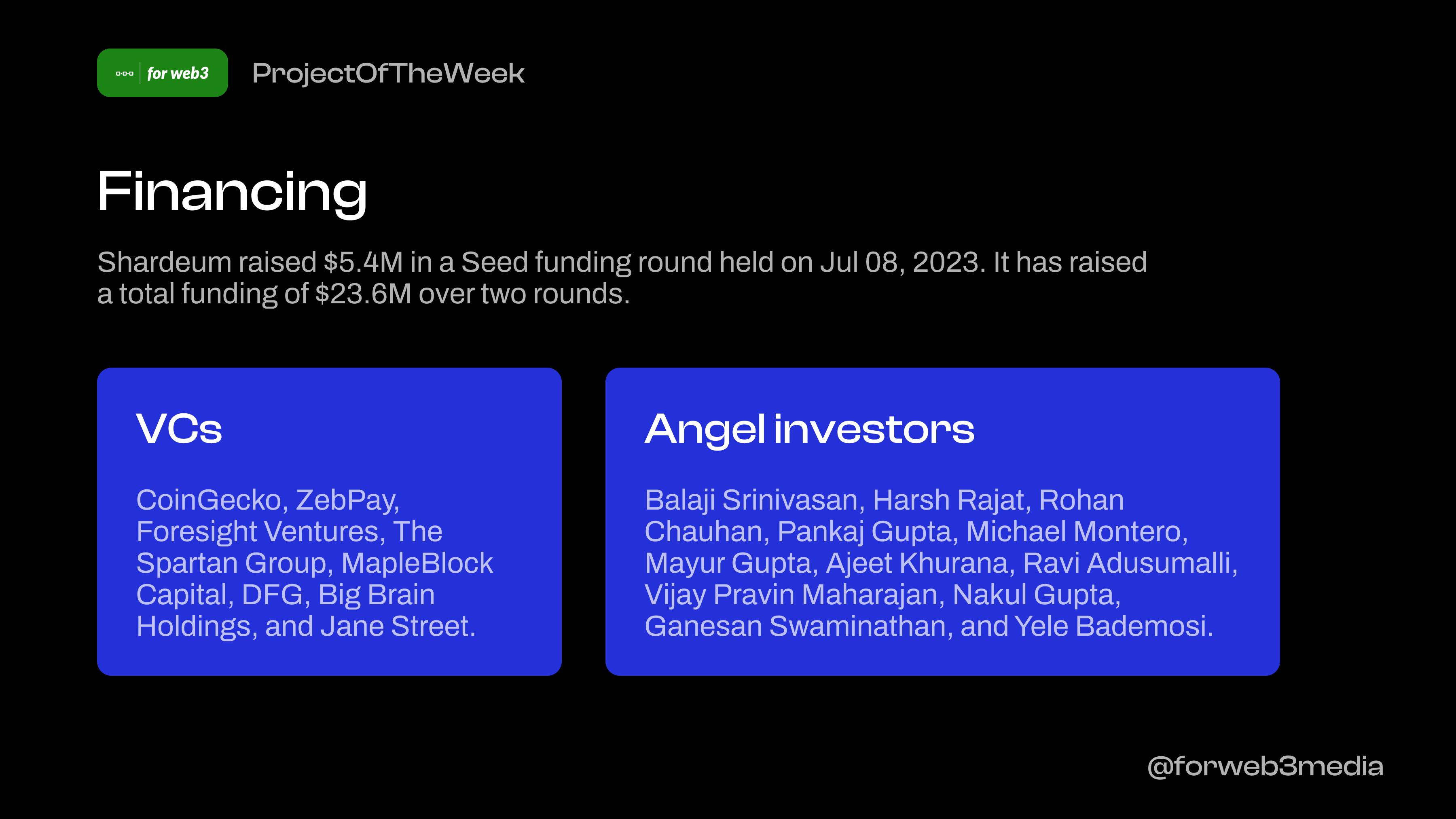
Shardeum raised $5.4M in a Strategic funding round held on Jul 08, 2023. It has raised a total funding of $23.6M over two rounds.
In 2022, the project raised $18.2 Million in seed funding from over 50 ECA Participants globally. This includes:
- VCs like CoinGecko, ZebPay, Foresight Ventures, The Spartan Group, MapleBlock Capital, DFG, Big Brain Holdings, and Jane Street.
- Angel investors, including Balaji Srinivasan, Harsh Rajat, Rohan Chauhan, Pankaj Gupta, Michael Montero, Mayur Gupta, Ajeet Khurana, Ravi Adusumalli, Vijay Pravin Maharajan, Nakul Gupta, Ganesan Swaminathan, and Yele Bademosi.
Shardeum Roadmap & Milestones
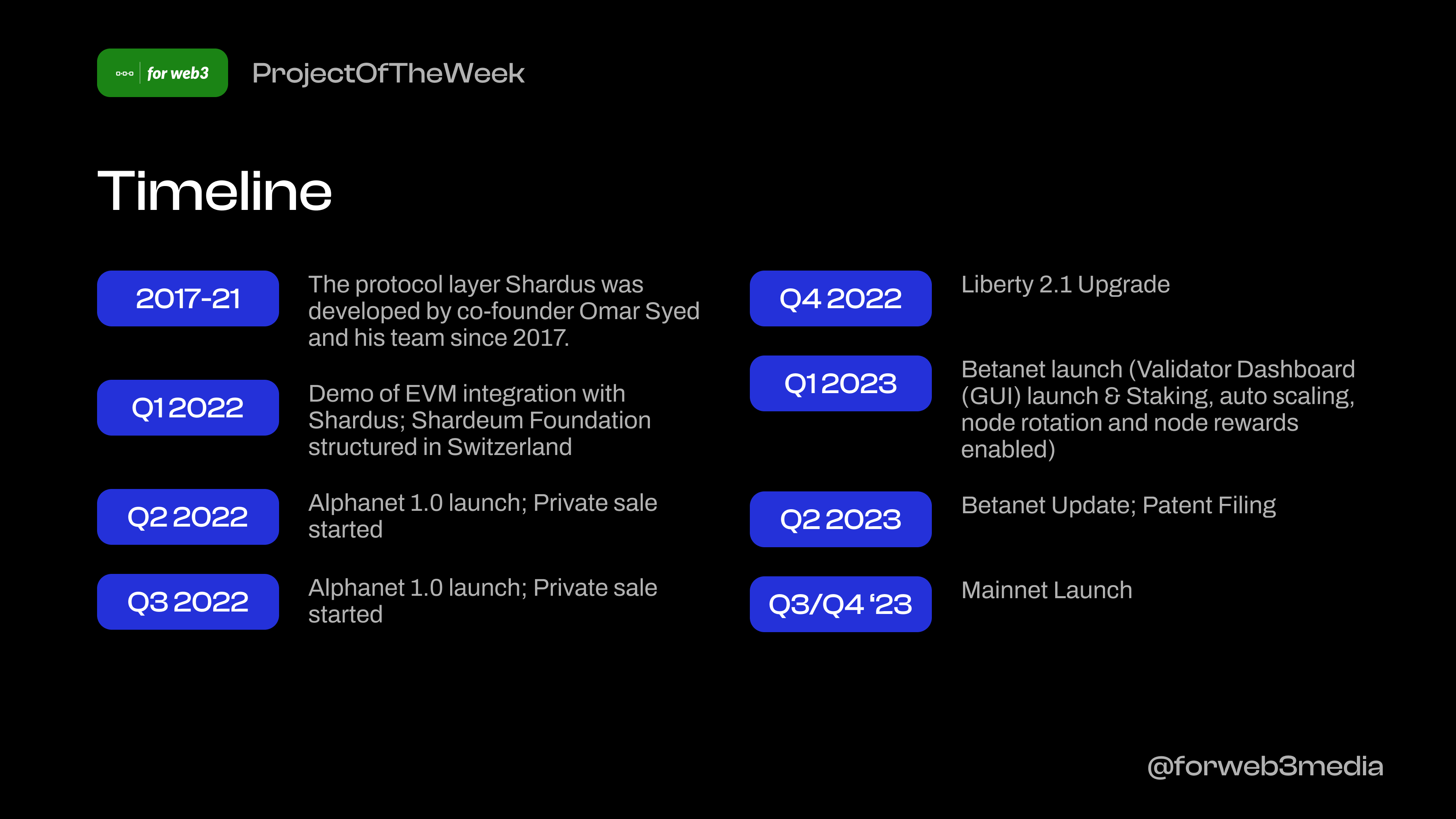
Shardeum was launched in February 2022, while the protocol layer Shardus was developed by co-founder Omar Syed and his team since 2017.
Shardeum’s protocol layer Shardus uses compute and state sharding to provide high throughput & low latency while upholding the highest level of decentralization and security. It promises to accommodate billions of daily active users in DApps. Shardeum has a public project license to the Shardus framework that allows Shardus token holders to claim 1% of the maximum supply.
With the structuring of Shardeum Foundation in Q1 of 2022, the project started with a successful demonstration of linear scalability to its community as an L1 open-source blockchain platform. In April 2022, Shardeum demonstrated linear scalability, a first-of-a-kind blockchain network.
Token Distribution
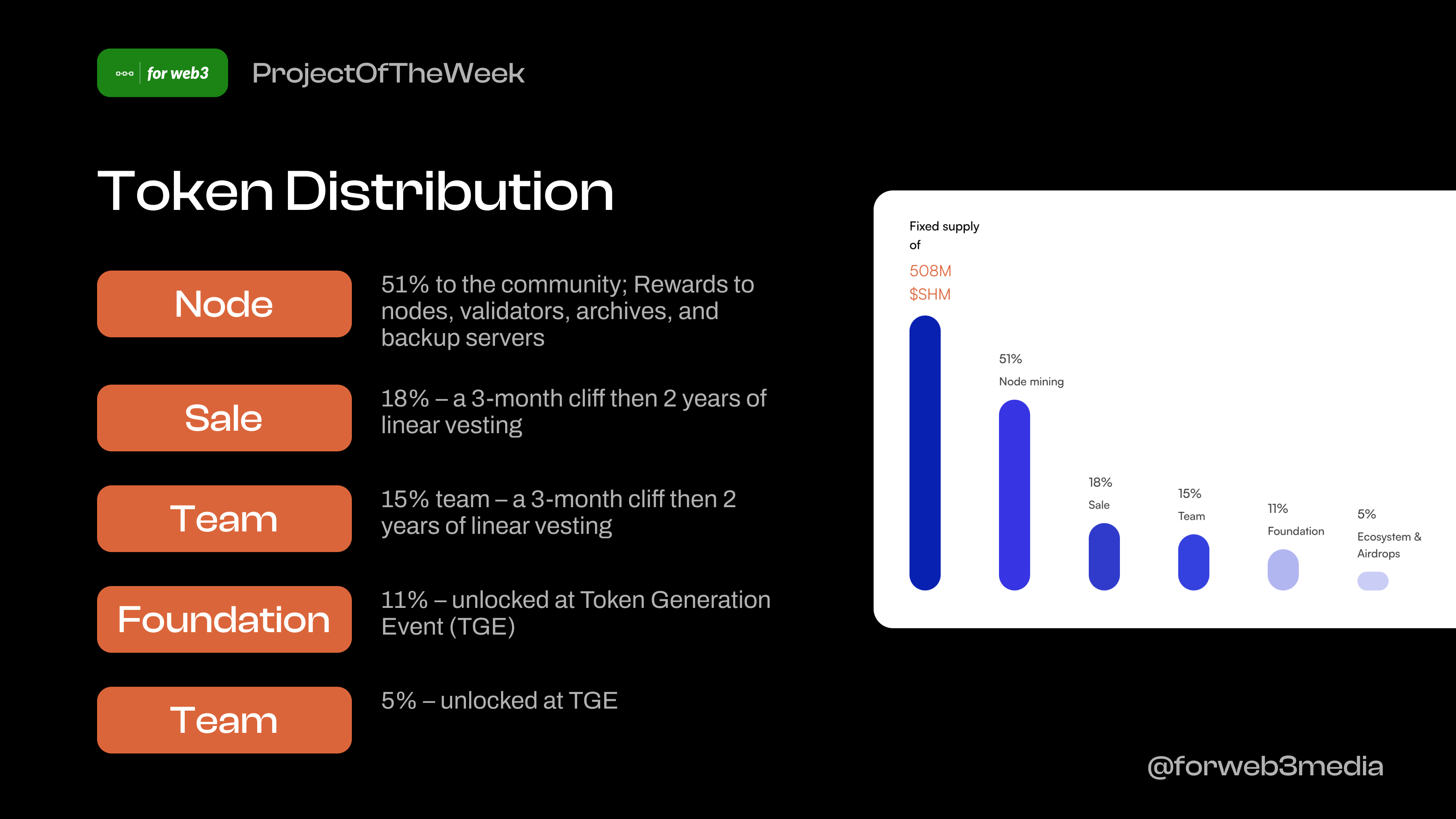
$SHM, Shardeum’s native crypto, acts as a reward for providing resources to the network & as fees for transactions to prevent botnet attacks & spam. Mined by validator, archive, and standby nodes, it has a total supply of 508M. Here’s the distribution of $SHM tokens :
- Node: 51% to the community; Rewards to nodes, validators, archives, and backup servers
- Sale: 18% – a 3-month cliff then 2 years of linear vesting
- Team: 15% team – a 3-month cliff then 2 years of linear vesting
- Foundation: 11% – unlocked at Token Generation Event (TGE)
- Ecosystem: 5% – unlocked at TGE
Community Initiatives
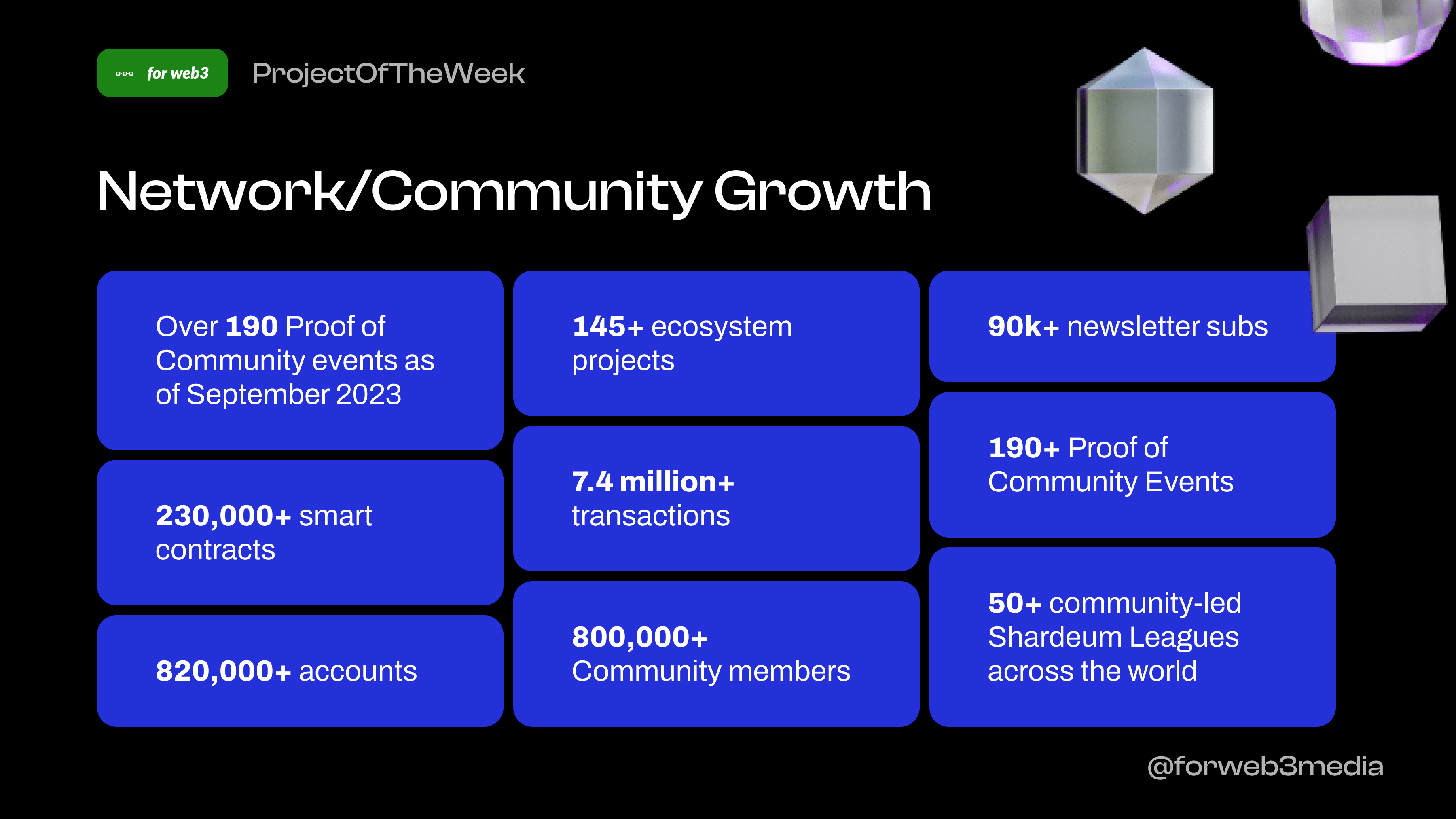
Shardeum’s aim for a more equitable society helps the platform connect thousands of Web3 enthusiasts through their community-run platforms. Here are some:
- Super Shardian Program: This program aims at Web3 literacy through workshops and events to boost the Shardeum ecosystem. Anyone willing to contribute to the platform can join the community, such as being an organizer of events and workshops, creating and managing the regional Shardeum community, and representing Shardeum at hackathons.
- Shardeum League: Shardeum Leagues are community-run groups that encourage community members to spread awareness about the project. Top leagues get rewarded from a prize pool of $2000.
- POCBackPackingIndia: The Proof of Community Backpacking India is a part of the Proof of Community meetups which aims at familiarising students with Web3 through workshops.
Future of Shardeum
The primary goal of Shardeum is to onboard everyone into the Web3 train by building the most optimal L1 solution with sustainable low gas fees & providing the same developer interface and UI as Ethereum. With the launch of the mainnet, the ecosystem is expected to grow rapidly and build a strong infrastructure with applications like DAO tooling, stablecoin platforms, oracle networks, and physical and digital marketplaces ground up.
Shardeum’s community-built and community-driven initiatives will have major applications in education, P2E & unconditional basic income, environment (sustainability & restoration), and news media and social media.

